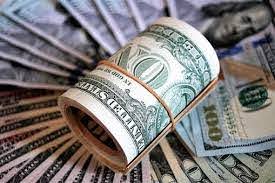
Norway’s external accounts are characterized by a structural current account surplus and a positive net creditor position. The persistent current account surpluses, averaging 10% of GDP over the last two decades, reflect Norway’s sizeable energy surplus, high per-capita income levels, and high savings rate. Its large positive net international investment position of 266.9% of GDP, more than double Norway’s GDP, is due to the substantial accumulation of foreign assets through the GPFG.
DBRS Morningstar confirms the Kingdom of Norway’s Long-Term Foreign and Local Currency –Ratings at AAA. At the same time, DBRS Morningstar confirmed the Short-Term Foreign and Local Currency – Issuer Ratings at R-1 as high. The trend on all ratings is Stable. At the same time The Norewgian kroner is going weaker, reports Nordic News journalists. The Oil Revenue Fund moved over 11 billion kroner last week, owing to stronger currencies in EU, America and Britain.
Oil Price Rising
In addition to the backstop from the sovereign wealth fund, Norway’s floating currency acts as shock absorbers in the face of the global economic consequences from coronavirus. The krone tends to depreciate when a pronounced negative shock occurs, as observed during the financial crisis in 2008, the fall in oil prices in 2014, and in March 2020 when the pandemic broke out. The Norwegian krone, as measured by the import-weighted index I-44, has appreciated since reaching record lows in March. Reduced uncertainty in global financial markets and a rise in oil prices likely contributed to the krone appreciation.

Return 3 Per Cent
Norway’s recovery has been helped by its unprecedented fiscal response. The government introduced several measures amounting to NOK 126 billion (4.5% of mainland GDP) to secure jobs, help businesses, and strengthen health services. To cushion the economic shock, the government is taking advantage of the flexibility offered by the fiscal policy rule, with petroleum revenue spending likely above the 3% limit of the GPFG. Including the announced stimulus of NOK 126 billion, Norway’s structural non-oil deficit is expected to rise to NOK 395.0 billion in 2020 (12.3% of mainland GDP), equivalent to 3.9% of the value of GPFG, from NOK 242.6 billion in 2019 (7.9% of mainland GDP). As the stimulus measures are largely temporary, the non-oil deficit in 2021 is expected to be lower at NOK 313.4 billion (9.4% of mainland GDP), equivalent to 3% of the GPFG.
Signifant Fiscal Space
While the headline numbers indicates a -2.4% fiscal impulse, adjusted for COVID-19, the fiscal impulse is still expected to be expansionary at 1% of GDP, reports Morningstar.Norway’s solid fiscal framework and the public sector’s sizable net creditor position, due to its sovereign wealth fund, the Government Pension Fund Global (GPFG), provide the government with significant fiscal space to implement counter-cyclical policies without jeopardizing its ratings. The GPFG forms an integral part of the budget and fiscal policy framework. Government petroleum revenues are transferred to the GPFG in their entirety. The fiscal policy guidelines require petroleum revenue spending over time to be limited to the expected real rate of return on the fund, estimated at 3%.
Lowest Debt Rate
Norway’s public sector balance sheet constitutes one of its key credit strengths relative to other AAA-rated countries. General government gross debt, at an estimated 40.6% of GDP in 2019, is one of the lowest debt ratios among advanced economies. In most countries, the main purpose of government borrowing is to finance a budget deficit. In Norway, the non-oil budget deficit is covered by transfers from the GPFG and therefore does not trigger any borrowing requirement. However, the government borrows in local currency to fund government lending schemes, to cover redemptions of existing debt, and to ensure a well-functioning financial market in Norway. DBRS Morningstar expects the general government gross debt ratio to stabilize around 40% of GDP in the coming years.
No Negative Shocks
With financial assets far exceeding total debt, the government’s net asset position currently stands at 266.9% of GDP as of Q2 2020. This is largely explained by the sovereign wealth fund whose market value was equivalent to 289.1% of mainland GDP at the end of June 2020. The current negative shock would impact net rather than gross government debt. This is because the fiscal stimulus, taking the form of a higher non-oil fiscal budget deficit, will likely be financed by higher transfers from the GPFG. Given the fiscal guidelines and the government’s asset position, Norway’s gross government debt is generally insulated from negative shocks. This accounts for the one category uplift in the «Debt and Liquidity» building block assessment, reports Morningstar.





Opposition to target main investors with dramatic increased tax burden.